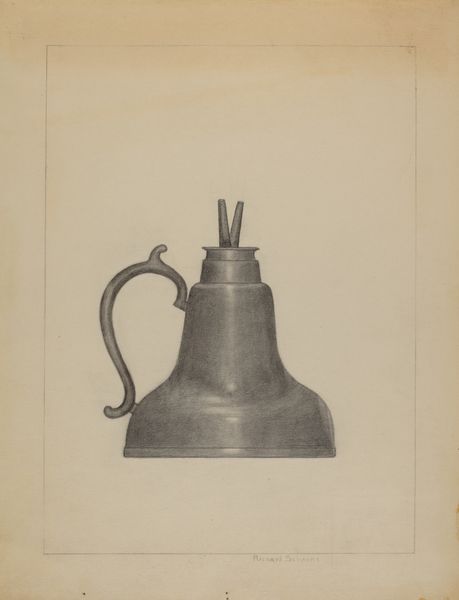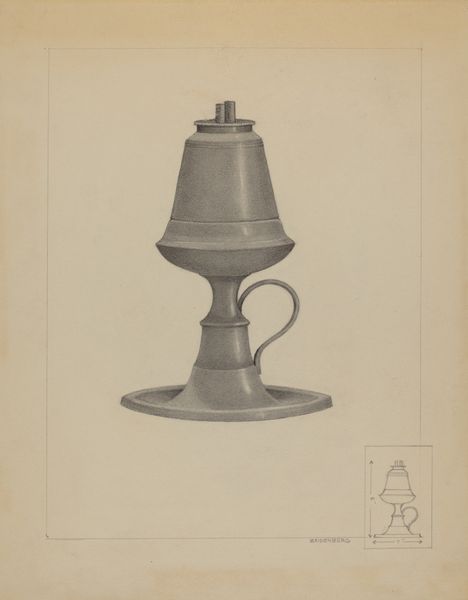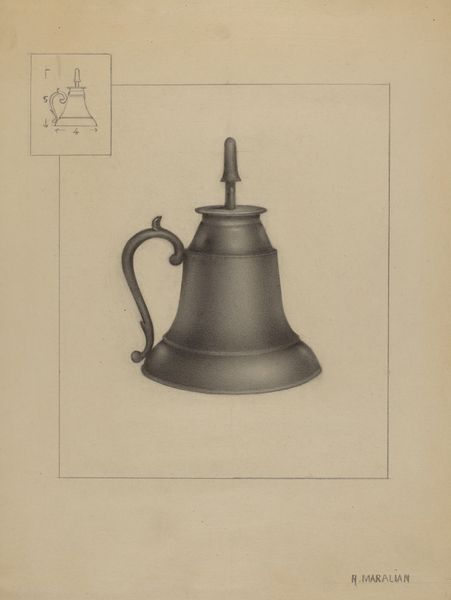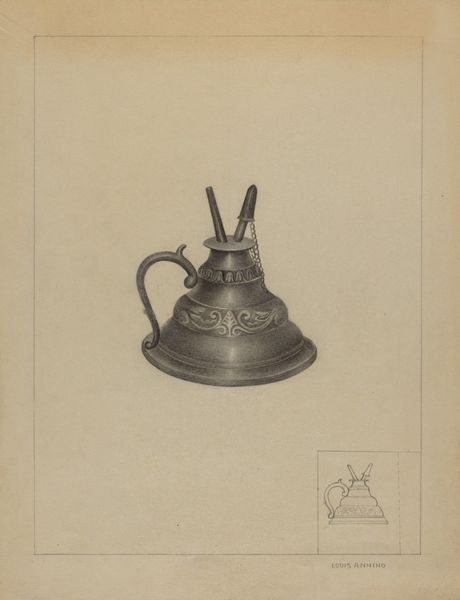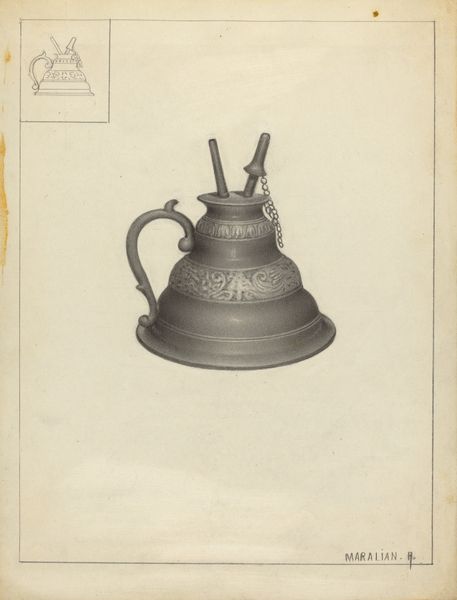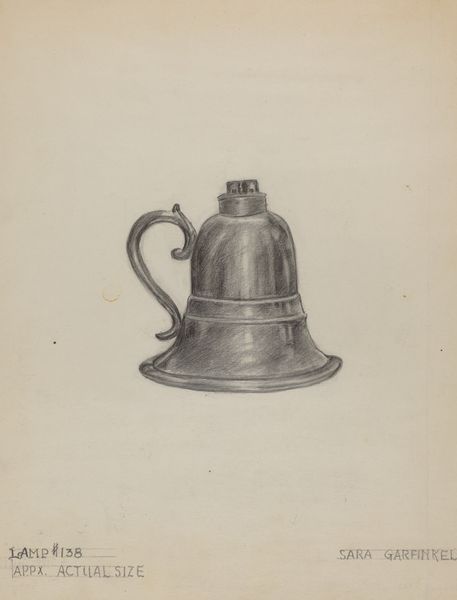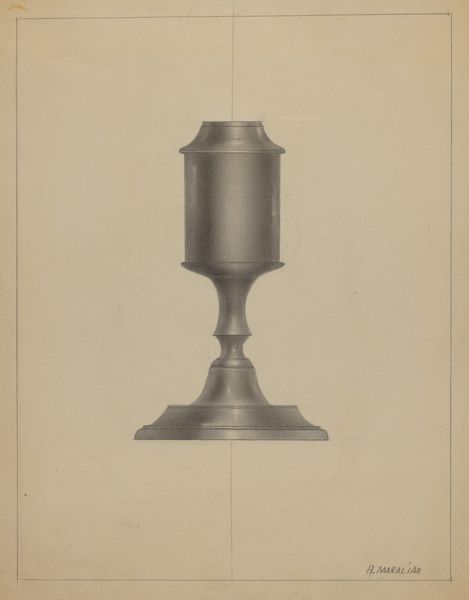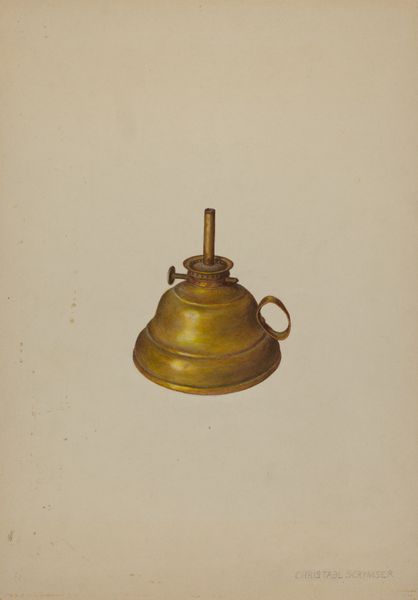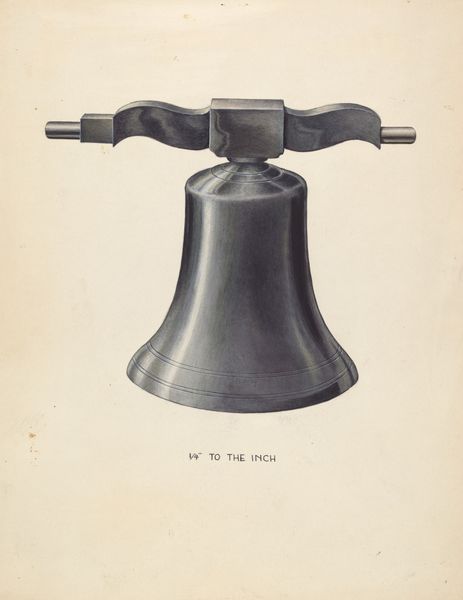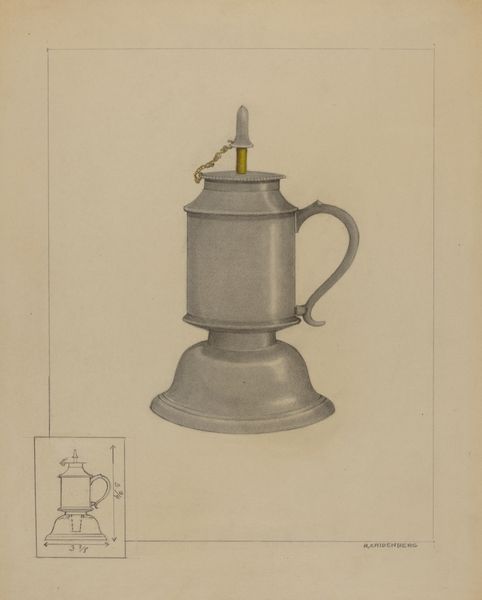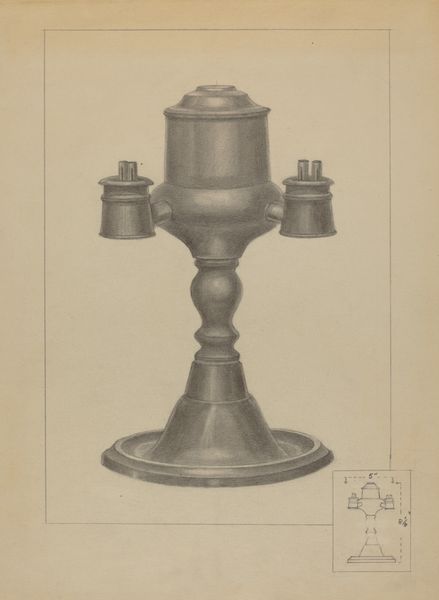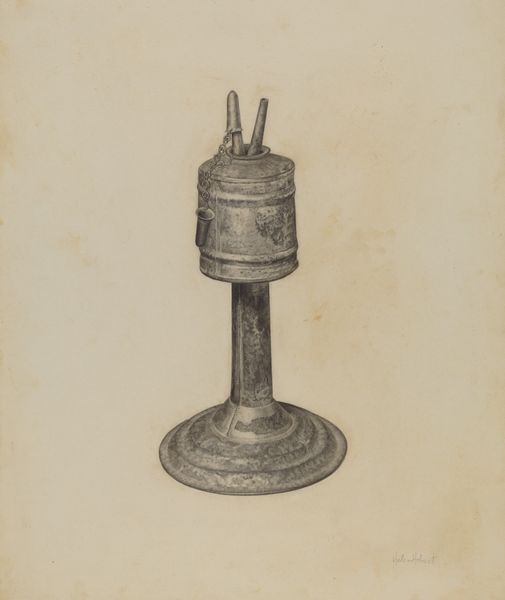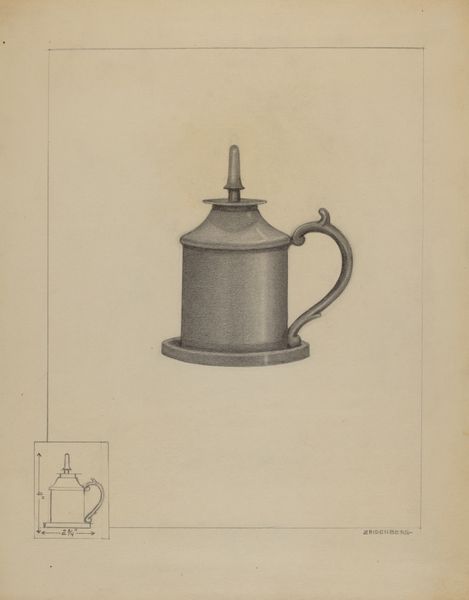
drawing, paper, pencil
#
pencil drawn
#
drawing
#
aged paper
#
toned paper
#
light pencil work
#
light coloured
#
old engraving style
#
paper
#
form
#
geometric
#
pencil
#
line
#
realism
Dimensions: overall: 29.4 x 22.9 cm (11 9/16 x 9 in.)
Copyright: National Gallery of Art: CC0 1.0
Curator: This is "Lamp" by Arsen Maralian, created sometime between 1935 and 1942. It’s a pencil drawing on what appears to be toned paper. Editor: My immediate impression is one of stillness and a subdued kind of light, even though it's just pencil. The object seems isolated, almost meditative. Curator: Absolutely. Maralian has reduced the form of the lamp to its bare essentials, creating almost an archetype of illumination. Lamps, historically, are so rich with symbolism. Light piercing the darkness, representing knowledge, hope, guidance… Editor: And consider the materials! The humbleness of pencil and paper, the simplicity of the lines. No embellishment, just the stark, utilitarian form of a lamp. It's almost a study in industrial design, prioritizing function. How was it made, this lamp? Who was using it? Curator: That's fascinating – seeing it as a design object connected to production and labor. Perhaps for Maralian, this very basic design speaks to enduring principles. Lamps, regardless of style, fulfill that innate human desire to push back against the dark. Think about the lamps found in ancient tombs… Editor: The paper itself speaks of time. It seems aged, patinated, drawing our attention to its very physical properties and how they intersect with the object it depicts. Its texture evokes the passing of decades. Does the visual simplicity belie the object's material history, the availability of those specific pigments at that period, or of certain industrial processes? Curator: That’s a good point. Perhaps the material limitation *informed* the image itself. But the light the lamp evokes... It’s interesting how a simple drawing of an everyday object can point towards more universal concepts about the human spirit. Editor: Or how that same mundane object grounds our attention, prompting us to consider the labour involved. It's almost defiant in its refusal to indulge artistic romanticism, instead posing profound questions about our needs and methods for satisfying them. Curator: Indeed, it highlights the power of objects, even the simplest, to contain both the everyday and the transcendent. Editor: A silent beacon then, to use your terminology, reminding us to seek clarity not only through illumination but through considered manufacture.
Comments
No comments
Be the first to comment and join the conversation on the ultimate creative platform.
